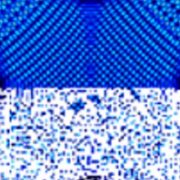Random Lasers
In a nutshell, a random laser is the coherent emission from active stochastic resonators.
In a series of articles around 1966, a Russian scientist V. S. Letokhov, of the Lebedev Physics Institute in Dubna considered the generation of light in the interstellar medium. In the presence of scatterers, as for example dust particles, photons diffuse like neutrons and, if some mechanism (following Letokhov a “negative absorption”) is able to increase their number, a sort of photonic reactor can be realized. At a threshold value for the amplification, a quantum generator of light, not properly a laser, is realized. Nowadays the process is known as RANDOM LASER.
The Letokhov’s basic idea is that of a stochastic resonator: a scattering medium with a large number of modes (roughly, waves with different directions) which are strongly coupled and display radiation losses. If the number of modes is sufficiently large their overlapping resonances merge and the result is a nonresonant feedback sustaining a laser-like action; its properties are today largely investigated, while, in many respects, they are still unknown. There are several analogies with neutrons in a reactor.
Letokhov’s analysis was not limited to the interstellar medium, but also included particles dispersed in a host medium able to amplify light, like a liquid dye. Indeed, the first demonstration of a random laser, in 1994, was done in the laboratory using such a kind of medium; since then the amount of related literature has grown steadily.
Examples of Random Lasers and Stochastic Resonators include granular systems, bio-logical tissue, nano-structured devices and many others.
See the “Light and Complexity” ERC-project directed by Claudio Conti


